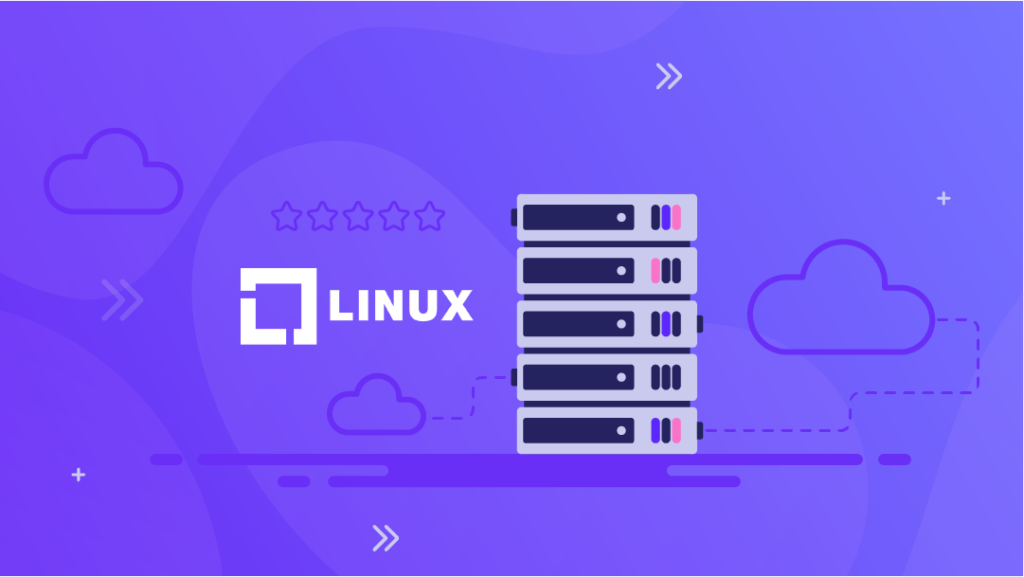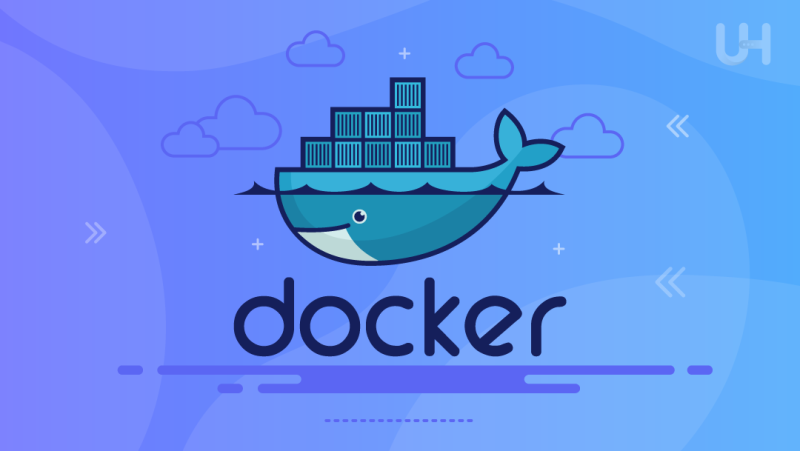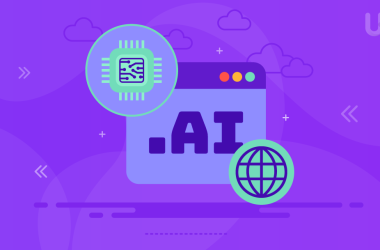Docker has changed modern software development by making it easier for developers. By abstracting away the host operating system, developers can carry out real work faster and more efficiently than ever. Thus, developers can focus on deploying and efficiently running their applications. From packaging applications in a single container to maintaining consistency across various environments, Docker has become (and continues to be) the answer for those in search of efficient, consistent, and easily deployed applications.
So, what is Docker? Let’s take a deep dive into the Docker container platform, shedding light on what it is, how it works, and how it’s enabling developers to weave the kind of app development magic that was simply unheard of just a few short years ago.
What is Docker?

A revolutionary software container platform, Docker has changed the development landscape by speeding up application development, distribution, and running. It is a tool that allows developers to take the full application, along with all of its parts, and package it up into a single container to ensure seamless functionality, no matter the working environment.
Docker also provides a very isolated and reproducible environment for developers. This makes it easier for developers to build and test applications that are exact replicas of the production environment. Docker eradicates compatibility issues and significantly diminishes configuration-related challenges for these applications as well.
Docker also streamlines the implementation and deployment of applications. Developers can easily release applications into a container, local server, cloud, or another production environment because everything they need to develop and run an application inside a container is included.
What is Docker Used For?
Although Docker can technically be applied to develop and deploy any type of software application, it can also help with achieving the following:
Continuously Deploying Software
Containers are poised to accelerate the software development process dramatically. By leveraging Docker technology and solid DevOps practices, including the use of DORA metrics to measure deployment frequency and change lead time, teams can quickly deploy containerized applications within seconds instead of the sometimes weeks or months needed for traditional monolithic applications. Any updates or changes to an application’s code can be seamlessly integrated and deployed within the pipeline by simply running a single command to spin up a new set of containers with the updated code.
Building a Microservice-Based Architecture
Docker has proved an invaluable resource for transitioning to a microservice-based architecture over a traditional monolithic application. Developers create and deploy multiple microservices, with each placed inside a container. A container orchestration tool, such as Docker Swarm, is then used to integrate the microservices to form a single software application.
Migrating Legacy Applications to a Containerized Infrastructure
Development teams involved in a project to modernize an existing legacy software application can also benefit from Docker. By using Docker, teams can migrate the application to a containerized infrastructure, for example, resulting in a more efficient and scalable application.
Enabling Hybrid Cloud and Multi-Cloud Applications
Docker containers offer the same behavior no matter where you deploy them. This not only makes it easy to move applications between your production cloud and the testing clouds of cloud vendors, but it also makes it easy to move applications that use Docker from one cloud vendor to another. This is the operating definition of both a hybrid cloud and a multi-cloud. In short, Docker works in a hybrid cloud and multi-cloud scenario.
How Does Docker Work?
Docker wraps an application and its dependencies within a virtual container, allowing the application to operate on any Linux server. This gives birth to the term “container” encapsulated units. The self-contained nature is due to the fact that Docker does not fail to include the required dependencies in a singular software entity.
A Docker ecosystem consists of:
- A Daemon that organizes the container’s build, run, and administration.
- A high-level API that the Daemon utilizes.
- A Command Line Interface (CLI) acts as a user interface by which all functionalities are accessed.
The Docker platform is open source under the Apache V2 license and has a number of components. Some of the tools and terminologies are as follows:
Docker Desktop
The Docker Engine is the only significant Docker component not available for Windows, Mac, and Linux as Docker components go because Docker Desktop, a GUI (Graphical User Interface) tool, is exclusively available on Windows and Mac. Run this component on a reliable Mac VPS to ensure a seamless flow. Instead of getting down to concrete cases with the Docker Engine, as you can on Linux systems, Docker Desktop is installed as an online virtual machine (VM). Additionally, you can run MacOS on Windows to facilitate the usage of Docker Desktop.
Once its house is in order, this tool is instantly available on Windows and Mac systems to manage a host of Docker components, including containers, images, volumes, local Kubernetes clusters, and development environments within containers.
Get Affordable VPS Hosting To Run Docker Tools!
Tired of purchasing costly hosting services? UltaHost offers the best solution for you. With an affordable Linux VPS hosting solution, you get the utmost flexibility and control, and fast servers guarantee uptime.
Docker Container
A Docker container is a standardized unit of software that houses the code and all its dependencies so the application runs quickly and reliably from one computing environment to another. A Docker container image is a lightweight, standalone, executable package of software that includes everything needed to run a piece of software:
- Program code
- Runtime engines
- System tools
- System libraries
- Settings
Containers isolate software from its environment and ensure that it works uniformly despite differences such as Linux, Mac, and Windows-based systems, regardless of whether the environment is on-premises or in the cloud.
You can decide for yourself which environment is better for you by reading our guide on:
Docker Image / Docker Registry
Think of a Docker image as an unchangeable file that, upon its creation, builds a container where you can execute your code. When you build an image using a “build” command, you generate a container with a “run” command. These images are stored in a Docker registry, such as “registry.hub.docker.com.” Images are made up of some set of layers of other images and exist to make sharing images over the network faster – no data needs to be transferred when images share layers.
Docker Engine
The Docker Engine improves application development with three key components:
- The Docker Daemon is a persistent process that manages containers and images on a given host.
- The Docker Engine REST API also provides the basic HTTP-based API for interacting with Docker.
- The Docker Client/CL is how you, a user, interact with Docker. This is a command-line tool.
Another tool that makes the same task even easier is the powerful Portainer. It features a simple, web-based GUI (Graphical User Interface) similar to the VMware vSphere management station. With this interface, even smaller projects can be managed very efficiently by providing fast access to hardware and Docker-specific information.
Benefits of Docker
Docker is commonly used nationwide by large companies. Its adoption is growing at a rapid rate. Let’s go over some advantages to see how it is beneficial for you.
Return on Investment & Cost Savings
First, the ROI is quite compelling in terms of reduced infrastructure expenses. This is because Docker’s value (running applications with fewer resources) directly translates into cold, hard cash over the long run. The fewer resources required to run applications, the less it costs a large company to earn sustained revenue over time.
Ultimately, Docker’s efficiency in software development means it will need less infrastructure, less server monthly charge, and fewer operational expenses (headcount) to operate that infrastructure month over month. The more engineering a team can do, or the more effectively engineers can operate per head, the more money an organization saves over the long run.
Portability
Docker’s key advantage comes from its portability. By encapsulating applications and dependencies within containers, Docker makes it easy to move applications between different environments, whether you are working on a laptop or deploying a cloud-based production server. As a result, performance and behavior are consistent, regardless of where you create or run your application.
Isolation
Docker containers also deliver strong application isolation, providing each application and its dependencies with an entire filesystem, ensuring that they have the runtime environment they need, are secured from other applications and their changes, and cannot affect additional applications.
Resource Efficiency
Docker also uses fewer resources than traditional virtual machines since it leverages a shared underlying operating system kernel. Get the best KVM VPS for better resource efficiency. This design not only uses less disk space and RAM on your KVM, but it also lets a single physical machine host a much higher density of user instances, thereby cutting hardware expenses and easing resource management.
Scalability
When it comes to application scalability, Docker enables a simple approach: making multiple instances of a container. In addition, several container orchestration tools, such as Google Kubernetes and Docker Swarm, can distribute the workload evenly. This dynamic capacity allows applications to quickly scale for rapid shifts in demand, an essential benefit for high-load environments.
Faster Development and Deployment
Docker simplifies application development and deployment. Containers allow developers to work in local environments, replicating production environments, reducing compatibility problems, and shortening the development cycle. Deployment becomes easier and more automatable as well, saving time and producing fewer errors.
Conclusion
Docker has changed the way we think about deploying applications in a modern computing environment. Its portability, resource efficiency, and scalability have redefined the very act of managing applications. Docker has streamlined development cycles, delivering consistency throughout the SDLC. It has not only made it significantly easier to maintain and deploy applications consistently but has also reduced the level of domain-specific knowledge needed to accomplish the task.
Integrate Docker with Windows VPS offered by UltaHost to get the best experience. Enjoy ultra-fast SSD NVMe speeds with no dropouts or slowdowns—all at an unbeatable cost!
FAQ
What makes Docker different from traditional virtual machines?
Docker utilizes containerization, sharing the same operating system kernel, leading to reduced resource usage compared to virtual machines. This lightweight approach enhances efficiency and allows more applications to run on a single machine.
Can Docker containers be easily moved between different environments?
Yes, Docker containers are highly portable. They encapsulate applications and dependencies, facilitating seamless migration between diverse environments, whether it’s from a local workstation to a cloud-based production server.
How does Docker enhance application deployment and automation?
Docker simplifies the deployment process by offering a more automatable and straightforward approach. This not only saves time but also reduces the likelihood of errors, making the overall deployment process more efficient.
Are Docker containers limited to Linux OS?
Docker containers can run on various operating systems, not just Linux. Docker’s cross-platform compatibility ensures that containers can operate seamlessly on Windows and Mac, offering flexibility in deployment across diverse environments.










